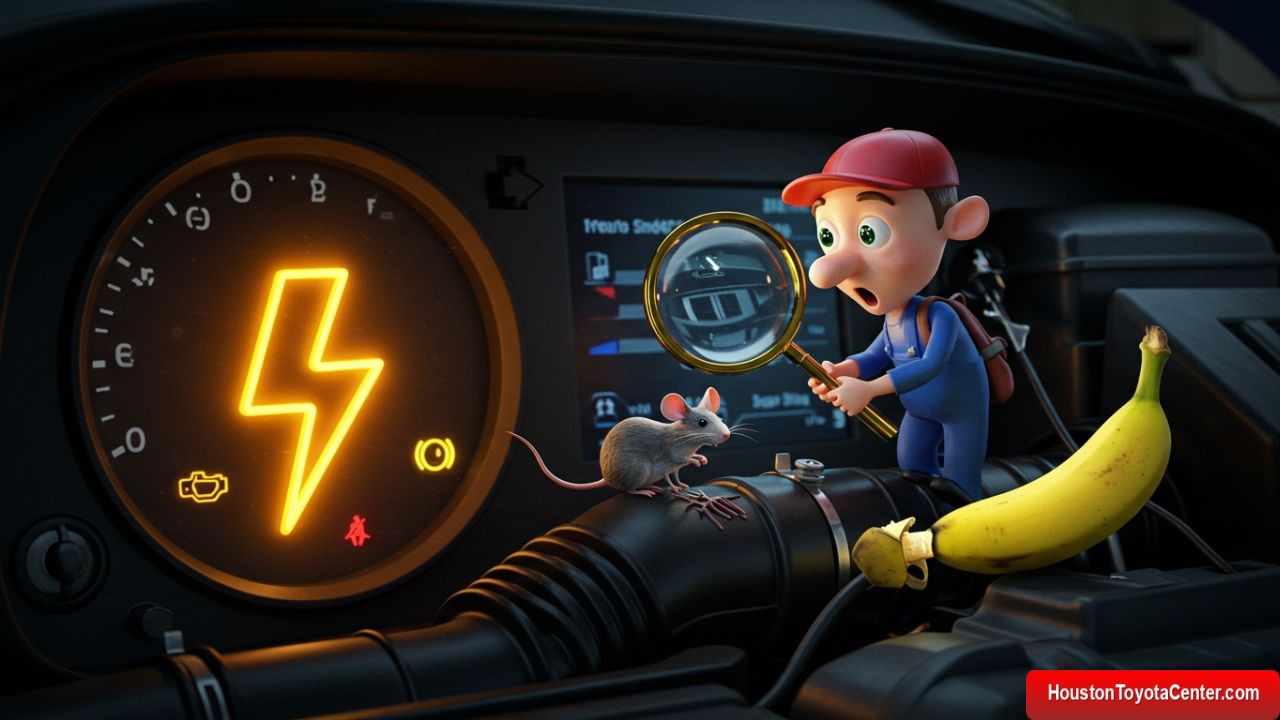The check engine light (CEL) is one of the most dreaded dashboard warnings for drivers. Its sudden illumination can trigger panic, conjuring visions of costly repairs or catastrophic engine failure. But what if we told you the culprit behind that glowing light might be something as simple as a loose gas cap—or even a banana peel stuck in your exhaust? In this article, we’ll uncover the truth behind the CEL, debunk myths, and reveal shocking reasons why your light might be on.
Section 1: Understanding the Check Engine Light
The CEL is part of your vehicle’s onboard diagnostics (OBD) system, which monitors emissions, engine performance, and component health. When a fault is detected, the CEL illuminates, and a diagnostic trouble code (DTC) is stored. While it’s easy to assume the worst, many triggers are minor.
Common Misconceptions
- Myth: The CEL always means expensive repairs.
- Reality: Over 30% of CEL cases stem from simple fixes (AAA, 2022).
- Myth: You must stop driving immediately.
- Reality: Most issues allow safe driving to a mechanic, though prolonged neglect can worsen problems.
Section 2: Common (But Overlooked) Causes
Let’s start with the usual suspects—many of which are inexpensive to resolve.
FREE: Quickly identify and understand problems with your vehicle 🚘
CLICK HERE| Issue | Symptoms | Cost to Fix |
|---|---|---|
| Loose/Faulty Gas Cap | CEL on, no drivability issues | $15–$50 (replace cap) |
| Oxygen Sensor Failure | Reduced MPG, rough idling | $200–$400 |
| Catalytic Converter | Failed emissions test, overheating | $900–$2,500 |
Shocking Fact: A study by CarMD found that 1 in 5 CELs are triggered by a missing or loose gas cap.
Section 3: The Shocking Truth – Unexpected Triggers
Now, let’s dive into the real surprises.
1. Rodent Damage
Mice and rats nesting in engine bays can chew wiring harnesses, triggering false codes. A Toyota owner once discovered a nest built around their O2 sensor, causing a $1,200 repair bill—until a $20 wiring fix solved it.
2. Software Glitches
Modern cars rely on complex software. A simple update or reset can resolve “phantom” CELs. In 2021, Ford recalled 150,000 trucks due to a software bug causing false emissions alerts.
3. Aftermarket Parts
Non-OEM components (e.g., performance chips) can confuse sensors. One Honda owner spent $500 diagnosing a CEL, only to find their aftermarket air filter skewed airflow readings.
4. …A Banana Peel?
In 2023, a viral TikTok showed a CEL caused by a banana peel lodged in an exhaust pipe, disrupting airflow. Mechanics removed it—no charge.
Section 4: Myths vs. Reality
| Myth | Reality |
|---|---|
| “CEL means the engine is dying.” | Often minor; 70% of issues are sensor-related. |
| “Resetting the battery fixes it.” | Erases codes but doesn’t address the root cause. |
| “Only dealers can diagnose it.” | OBD-II scanners ($20–$100) let you read codes at home. |
Section 5: DIY Diagnosis – How to Check Codes
- Use an OBD-II Scanner: Plug into the port under your dashboard.
- Read the Code: Match it to common issues (e.g., P0442 = evaporative emissions leak).
- Address the Problem: Fix it yourself or consult a mechanic.
Pro Tip: Apps like Torque connect your phone to the scanner for real-time data.
Section 6: Prevention Tips
- Tighten your gas cap after refueling.
- Schedule regular maintenance (spark plugs, filters).
- Avoid cheap aftermarket parts.
- Keep rodents at bay with natural repellents (peppermint oil).
Conclusion
The check engine light doesn’t always signal disaster. From loose caps to critter invasions, many fixes are simple—and cheap! Next time your CEL glows, stay calm, check the basics, and remember: it might just be a banana.


Leave a Reply